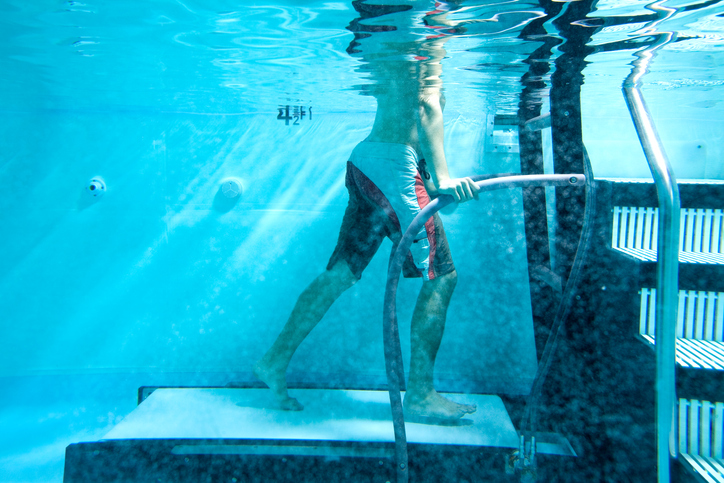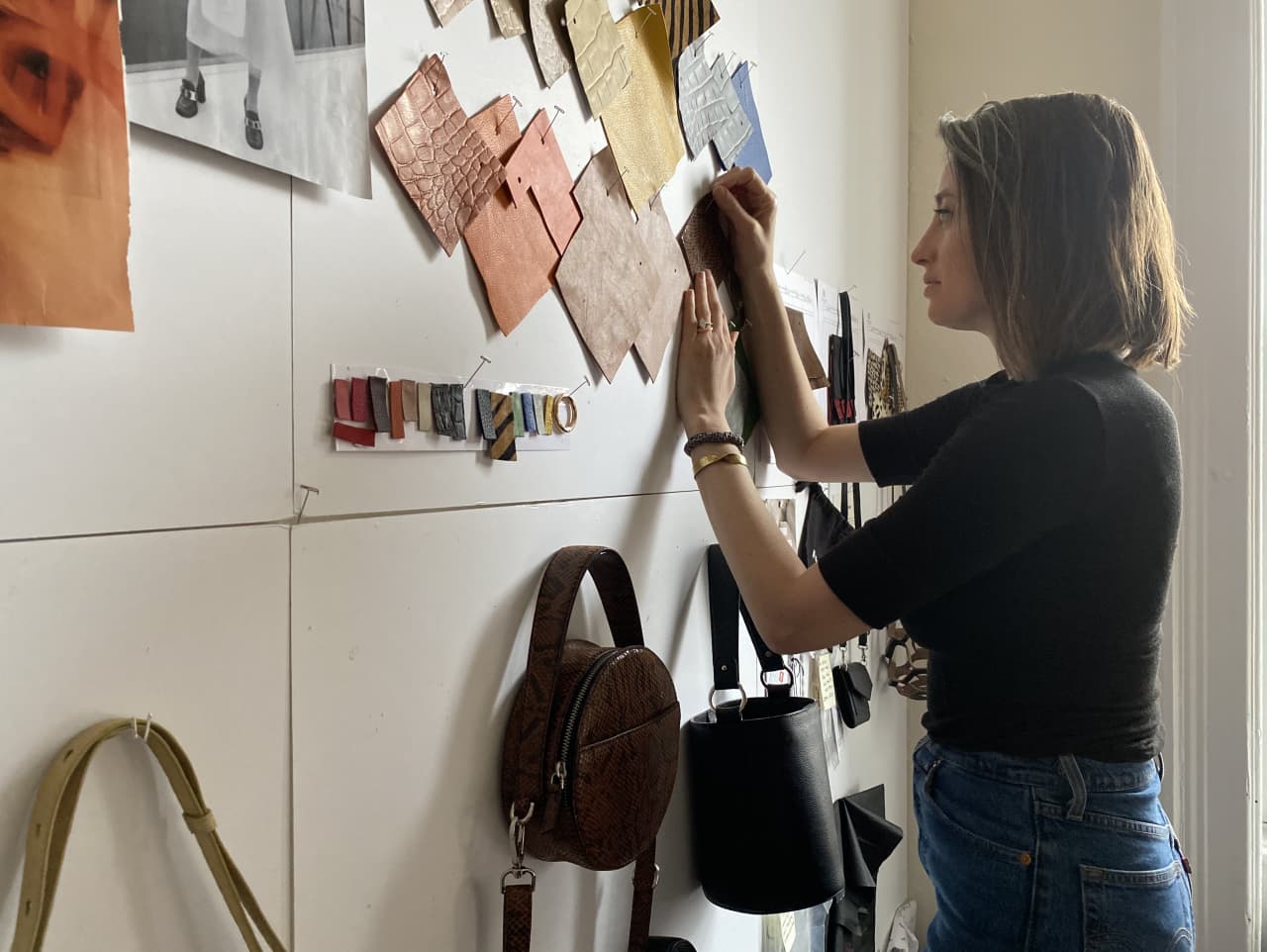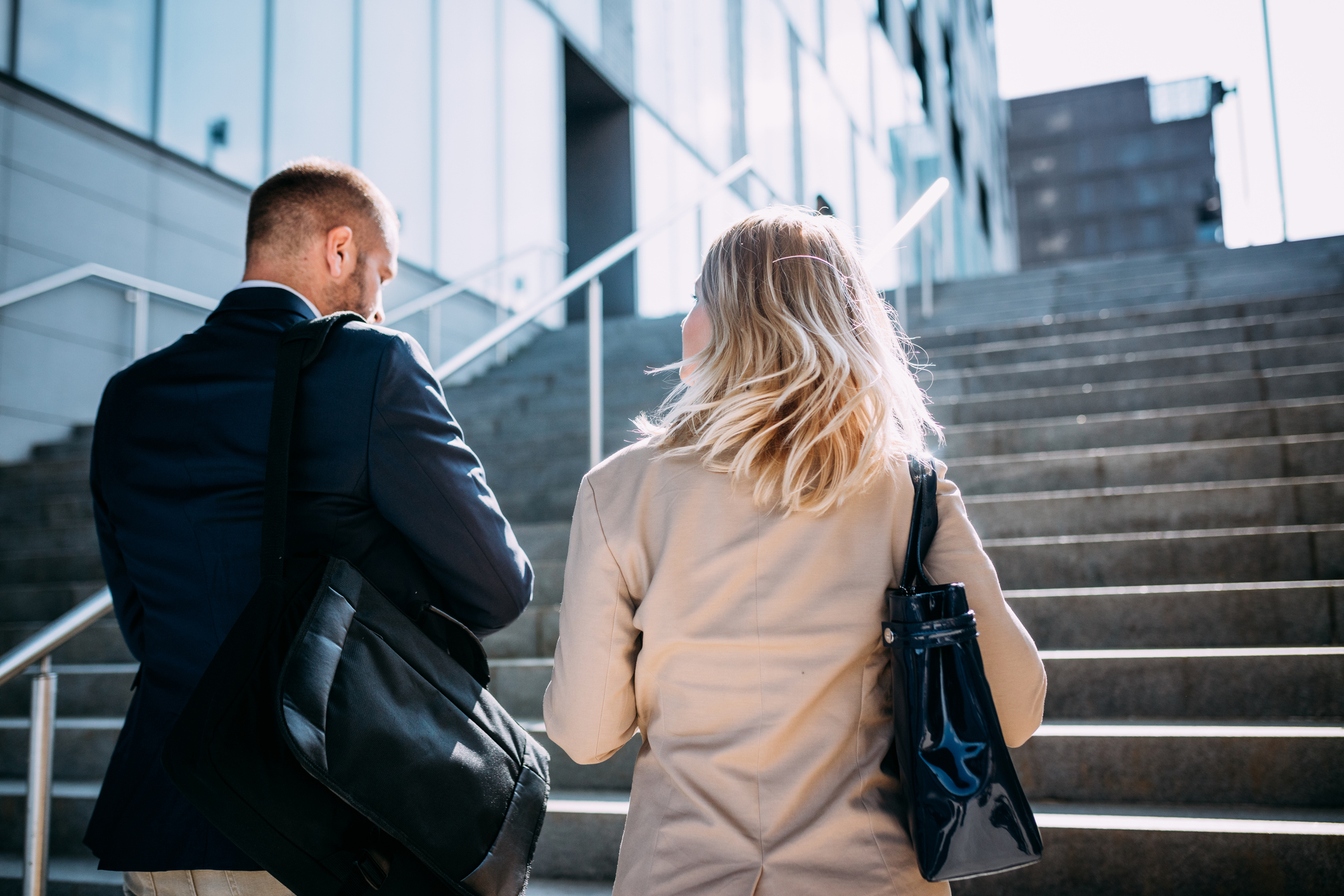The Seawater Cure: How the French Slim Down
A food-and-wine writer from the U.S. describes his annual pilgrimage to the Normandy Coast for thalassotherapy—a round of treatments that’s proven to be an antidote for his occupational overindulgence.
AS A food-and-travel writer who lives in France, I face occupational hazards other people might envy: Think white Burgundies, foie gras, butter, cream and the world’s best cheeses. It’s a constant battle to avoid ending up with the silhouette of a pear.
That’s why in the years since I moved to Paris in 1986, I’ve become a fan of thalassotherapy, taking dozens of “cures” at some of the 50-odd thalassotherapy centres along the Atlantic and Mediterranean littorals of France. The word derives from the Greek words “thalassa” (sea) and “therapeia” (to nurse or cure) and refers to a series of treatments—heated seawater baths, stimulating jet showers and seaweed wraps—and exercise such as aqua gym (in-water calisthenics).
While these cures alleviate the fatigue and sluggishness I feel after months of late-night dinners and deadline pressure, I’ve found that a weeklong thalassotherapy circuit that includes low-calorie meals also contributes to a healthier, slimmer, better-toned me. Apparently, Plato believed “the sea cures all human ailments,” but my goal is simply to retreat, relax and, at the end, be able to tighten my belt to its customary notch.
A thalassotherapy experience can be completed in as little time as a weekend, but a typical stay lasts 5-7 days. A 6-day signature cure with room and board and four treatments a day costs about $1,580 at Thalazur in Cabourg, a well-mannered Belle Époque seaside resort in Normandy. It was there I booked my most recent extended cure in February, 2020.
I’d heard of Cabourg as a favourite escape of Marcel Proust, who stayed at the Grand Hôtel and, by his account, would gaze at the flinty waves of the English Channel while enjoying his favourite sole Normande (sole poached in cider with a rich cream sauce garnished with button mushrooms, shrimp and mussels).
The centre is a brisk 10-minute walk from the heart of Cabourg with its fan-shaped street plan spreading out from the casino and the Grand Hôtel. Even if my low-calorie regimen barred me from indulging in sole Normande, I never felt gastronomically deprived as I enjoyed a healthy menu with tasty choices such as freshly shucked Norman oysters and steamed salmon with spinach.
My pleasantly monastic existence found me donning a terry cloth bathrobe and slippers every morning and reporting for my daily program of five treatments. Administered by cheerful spa attendants in individual white-tiled spa cabins, these averaged 25 minutes each. While the seaweed jet baths were blissfully relaxing, the high-velocity jet showers, an attempt to pummel the cellulite out of you and improve circulation, were more of a “grin and bear it” prospect.
I can’t pretend I loved the wraps either: Slathered in puréed seaweed, swathed in huge sheets of plastic film and then covered with a heated blanket, I felt like I was being mummified. This detoxification process promises to rid you of “water weight,” and your parched skin receives a good dose of seaweed’s moisturising oligo elements, but I inevitably developed an itch somewhere I couldn’t scratch. Still, when the slick plastic was stripped away and I could shower, I felt hugely invigorated.
More alarming, I also endured cryotherapy. The attendants locked me in a capsule of dry air cooled to -230 degrees Fahrenheit for three minutes, an experience meant to improve circulation and increase production of cortisol, collagen, endorphins and adrenaline. The adrenaline rush, at least, was real; it was a profound relief to exit my capsule after being subjected to a blast of Arctic chill while wearing nothing more than black paper spa panties.
These morning regimens induced a languorous exhaustion, so I inevitably followed up the light lunch with a nap in the afternoon. Then, refreshed, I took long walks on the beach or bicycled along the promenade in front of the hotel.
Memories of my stay—and the 7 pounds I dropped there—prompted me to test the waters again last winter. I booked a 1-night, 2-day weekend sampler at the Thalazur in Port Camargue on the Mediterranean, an hour from my house.
This centre was smaller but also had lovely sea-views, plus my stylish sea-shack style room came with a large private balcony. The three treatments a day were excellent, too; the cost, about $178, was worth it for the belt-tightening.
When, on the Monday after my return home, I went to the single-window post office in my village, the post mistress raised her eyebrows theatrically. “Bonjour!” she said with a grin. “What happened!? You look great!” I went for a weekend of thalassotherapy, I told her. “Ah, voilà! La Thalasso fait toujours du bien,” she purred.
She was right, of course. I look forward to a week-long saltwater wallow this winter, maybe in Bandol with its views of the Mediterranean, or at the elegant new Relais Thalasso in the seaside town of Pornichet on the sunny Atlantic coast in the Loire region. Unlike at other centers, where you traipse about between treatments, the Relais Thalasso crew stash you in a spacious private suite with a comfy lounge area, the better to nap before another go-round.
Water, Water, Everywhere
France pioneered thalassotherapy but you can find excellent centers in other countries, too
La Perla, Spain
For the uninitiated, La Perla, a stylish centre in San Sebastián in the Spanish Basque Country, is a great place to sample thalassotherapy before committing to a full-on cure. Originally established by Spain’s Queen Maria Cristina, when she was queen from 1829-1833, at the royal family’s summer house here, the spa was rebuilt in 1912 on a site overlooking La Concha, a crescent-shaped beach. A 5-hour day pass gives you access to a hydrotherapy pool, water beds, marine steam baths and an in-water exercise circuit. Another option includes a massage and lunch in the spa’s restaurant overlooking the sea. From $49 for a 5-hour day pass.
Vilalara Longevity Thalassa and Medical Spa, Portugal
Vilalara Longevity Thalassa and Medical Spa in Lagoa, a city in Algarve, Portugal’s southernmost region, is set in lush gardens overlooking the Atlantic. It has two seawater pools, 20 treatment cabins and a variety of cures, including a 5-night detoxification program with 2 thalassotherapy sessions per night, lymphatic drainage massages, access to thalasso pools and a consultation with a nutritionist to personalise a tasty low-calorie meal plan or a liquid diet of anti-inflammatory shakes, juices and soups. From about $3,899.
Divani Apollon Palace and Thalasso, Greece
Situated on the Athenian Riviera, this world-class spa in the Divani Apollon Palace and Thalasso outside of Athens boasts the largest thalassotherapy pool in Greece with 16 different water jet areas in its expanse. The X factor at this family-run beach-front property with 25 treatment rooms is its healthy low-calorie menu created by the hotel’s chef and in-house dietician. Appetising proof that shedding pounds needn’t mean privation: the zucchini-crust Greek pizza with anthotryo (fresh cheese), cherry tomatoes, oregano and EVOO. From about $1,747 for a 3-day stay.
The Wall Street Journal is not compensated by retailers listed in its articles as outlets for products. Listed retailers frequently are not the sole retail outlets.
 Copyright 2020, Dow Jones & Company, Inc. All Rights Reserved Worldwide. LEARN MORE
Copyright 2020, Dow Jones & Company, Inc. All Rights Reserved Worldwide. LEARN MORE
This stylish family home combines a classic palette and finishes with a flexible floorplan
Just 55 minutes from Sydney, make this your creative getaway located in the majestic Hawkesbury region.
As Paris makes its final preparations for the Olympic games, its residents are busy with their own—packing their suitcases, confirming their reservations, and getting out of town.
Worried about the hordes of crowds and overall chaos the Olympics could bring, Parisians are fleeing the city in droves and inundating resort cities around the country. Hotels and holiday rentals in some of France’s most popular vacation destinations—from the French Riviera in the south to the beaches of Normandy in the north—say they are expecting massive crowds this year in advance of the Olympics. The games will run from July 26-Aug. 1.
“It’s already a major holiday season for us, and beyond that, we have the Olympics,” says Stéphane Personeni, general manager of the Lily of the Valley hotel in Saint Tropez. “People began booking early this year.”
Personeni’s hotel typically has no issues filling its rooms each summer—by May of each year, the luxury hotel typically finds itself completely booked out for the months of July and August. But this year, the 53-room hotel began filling up for summer reservations in February.
“We told our regular guests that everything—hotels, apartments, villas—are going to be hard to find this summer,” Personeni says. His neighbours around Saint Tropez say they’re similarly booked up.
As of March, the online marketplace Gens de Confiance (“Trusted People”), saw a 50% increase in reservations from Parisians seeking vacation rentals outside the capital during the Olympics.
Already, August is a popular vacation time for the French. With a minimum of five weeks of vacation mandated by law, many decide to take the entire month off, renting out villas in beachside destinations for longer periods.
But beyond the typical August travel, the Olympics are having a real impact, says Bertille Marchal, a spokesperson for Gens de Confiance.
“We’ve seen nearly three times more reservations for the dates of the Olympics than the following two weeks,” Marchal says. “The increase is definitely linked to the Olympic Games.”

Getty Images
According to the site, the most sought-out vacation destinations are Morbihan and Loire-Atlantique, a seaside region in the northwest; le Var, a coastal area within the southeast of France along the Côte d’Azur; and the island of Corsica in the Mediterranean.
Meanwhile, the Olympics haven’t necessarily been a boon to foreign tourism in the country. Many tourists who might have otherwise come to France are avoiding it this year in favour of other European capitals. In Paris, demand for stays at high-end hotels has collapsed, with bookings down 50% in July compared to last year, according to UMIH Prestige, which represents hotels charging at least €800 ($865) a night for rooms.
Earlier this year, high-end restaurants and concierges said the Olympics might even be an opportunity to score a hard-get-seat at the city’s fine dining.
In the Occitanie region in southwest France, the overall number of reservations this summer hasn’t changed much from last year, says Vincent Gare, president of the regional tourism committee there.
“But looking further at the numbers, we do see an increase in the clientele coming from the Paris region,” Gare told Le Figaro, noting that the increase in reservations has fallen directly on the dates of the Olympic games.
Michel Barré, a retiree living in Paris’s Le Marais neighbourhood, is one of those opting for the beach rather than the opening ceremony. In January, he booked a stay in Normandy for two weeks.
“Even though it’s a major European capital, Paris is still a small city—it’s a massive effort to host all of these events,” Barré says. “The Olympics are going to be a mess.”
More than anything, he just wants some calm after an event-filled summer in Paris, which just before the Olympics experienced the drama of a snap election called by Macron.
“It’s been a hectic summer here,” he says.

AFP via Getty Images
Parisians—Barré included—feel that the city, by over-catering to its tourists, is driving out many residents.
Parts of the Seine—usually one of the most popular summertime hangout spots —have been closed off for weeks as the city installs bleachers and Olympics signage. In certain neighbourhoods, residents will need to scan a QR code with police to access their own apartments. And from the Olympics to Sept. 8, Paris is nearly doubling the price of transit tickets from €2.15 to €4 per ride.
The city’s clear willingness to capitalise on its tourists has motivated some residents to do the same. In March, the number of active Airbnb listings in Paris reached an all-time high as hosts rushed to list their apartments. Listings grew 40% from the same time last year, according to the company.
With their regular clients taking off, Parisian restaurants and merchants are complaining that business is down.
“Are there any Parisians left in Paris?” Alaine Fontaine, president of the restaurant industry association, told the radio station Franceinfo on Sunday. “For the last three weeks, there haven’t been any here.”
Still, for all the talk of those leaving, there are plenty who have decided to stick around.
Jay Swanson, an American expat and YouTuber, can’t imagine leaving during the Olympics—he secured his tickets to see ping pong and volleyball last year. He’s also less concerned about the crowds and road closures than others, having just put together a series of videos explaining how to navigate Paris during the games.
“It’s been 100 years since the Games came to Paris; when else will we get a chance to host the world like this?” Swanson says. “So many Parisians are leaving and tourism is down, so not only will it be quiet but the only people left will be here for a party.”
This stylish family home combines a classic palette and finishes with a flexible floorplan
Just 55 minutes from Sydney, make this your creative getaway located in the majestic Hawkesbury region.






















